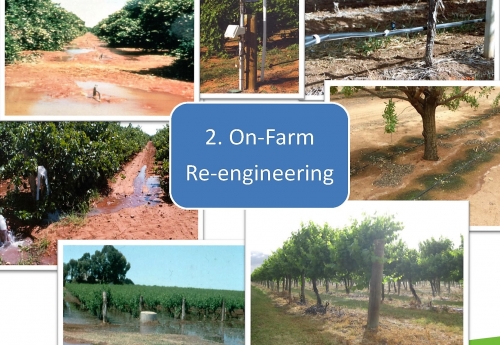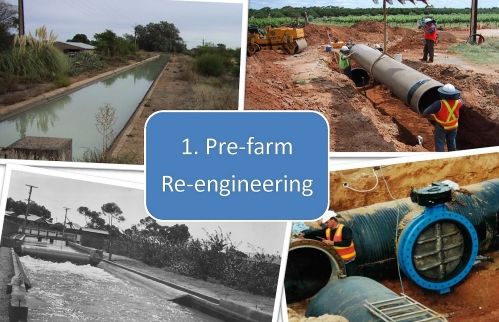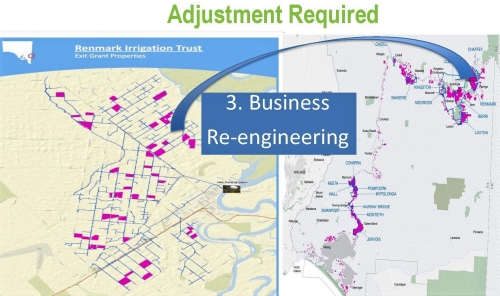
Pre-Farm to On-Farm Re-Engineering:


South Australia has been undergoing irrigation reform for over thirty years, initially in response to rising groundwater levels and salinization. In that period two phases of irrigation system redevelopment have occurred with significant investment in the move from open channels to piped water to the “gate. Shared funding from irrigators, State and Commonwealth Governments enabled schemes such as Loxton to occur with significant water savings due to the elimination of “channel leakage”. It was estimated that there was a water saving of about a 30%. However, water to the gate, in order to meet demand, was a catalyst for the adoption of new technology (such as drip irrigation and soil moisture sensors) to enable irrigators to understand and manage their water more efficiently. It also allowed them to expand production by utilising the water savings again estimated to be up to 30%.
Business Re-Engineering:

The millennium drought caused significant hardship for all irrigators but it also accelerated the adoption of water trading and the “water market” as well as the development of the Basin Plan and water recovery for the environment. Much of the funding was allocated for irrigation system upgrades to achieve water savings that could be allocated to the Commonwealth Water Holder. In responding to the pressure to find water for the environment, South Australian irrigators were concerned that there were few opportunities to find further water savings from irrigation delivery systems. As a consequence the South Australian River Murray Sustainability Program (SARMS) was developed in recognition that as a consequence of “water trading” water had become a financial commodity and investment in improved business management would allow irrigators to make water available in a manner similar to water savings from irrigation system efficiency. This is considered to represent the third generation of irrigation efficiency: improved business efficiency from using water as one of various financial inputs to the irrigation enterprise to achieve overall business efficiency.
SARMS, to date, has invested over $170m in projects that have provided over 35Gl of water for the environment. Importantly this level of investment has seen many irrigators review their irrigation and business practices with significant improvements in their business viability as well as their confidence in the region and the industry. This investment has also rolled through the local community with irrigation design companies, irrigation and other equipment providers, building contractors, construction companies as well as plant propagation companies all being employed by funding recipients. Irrigators more broadly throughout the region have an understanding of the financial implications of water on their business and can plan for future shocks to the system such as recently experienced by the initial opening allocation of 36%.






